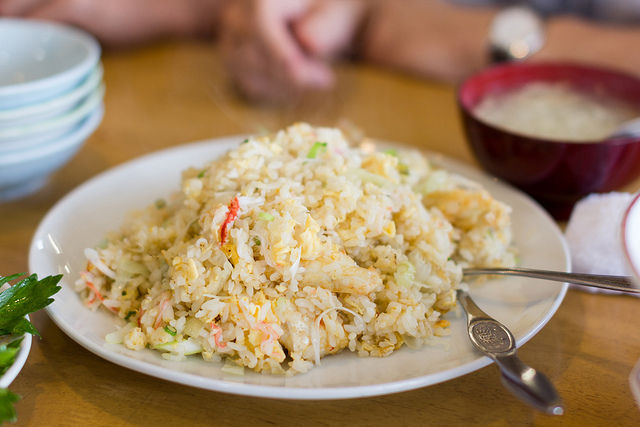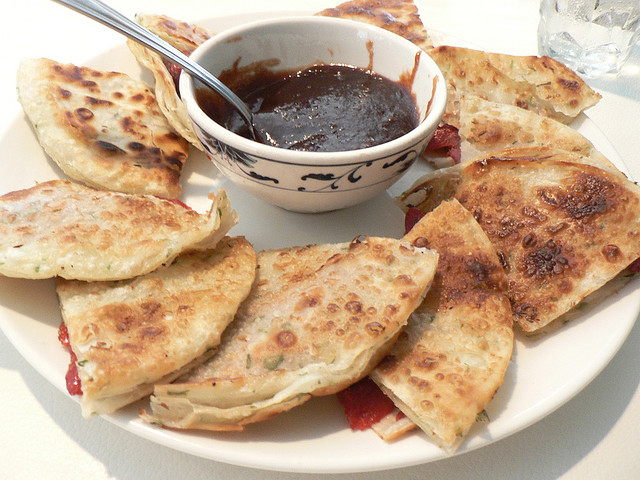The Truth About Chinese Food: Get Real with These Delicious Lunch Catering Ideas
Whenever we’re ordering cuisine from another country, it can be tough to tell whether a dish is authentic to its country of origin, or if it’s been tweaked to suit Western tastes. While there’s absolutely nothing wrong with putting an American spin on traditional cuisines from other parts of the world, having a better understanding of what we’re eating makes the experience more rewarding — and sometimes inspires interest in a new culture.

Image source: Flickr user by t-mizo
Signs of authentic Chinese food
Chinese food is one of the best examples when it comes to food that has been Westernized in the majority of American restaurants. Usually when we order Chinese takeout, the food that we’re receiving is actually a fusion of Chinese and American cuisine — many of the dishes on menus here wouldn’t be found in China.
Even within China, the food varies greatly across the country: each province has different flavors, ingredients, and styles of cooking that are specific to their location and people. However, in comparing authentic Chinese food with American-Chinese food, there are still broad contrasts to be made. For example, even though broccoli is one of the most prevalent vegetables used in American-Chinese food, it’s rarely (if ever) used in authentic Chinese food. Items like pig ears and duck blood, while commonplace in China, are usually left off the menu in American restaurants — not too many Americans have developed a taste for these aspects of Chinese cuisine! One thing that does remain the same in both countries is the use of MSG in many dishes.
In terms of ingredients, real Chinese cuisine is typically healthier than American-Chinese food. The former relies heavily on vegetables, cooked wheat noodles, tofu, and soybeans for most of their dishes, along with a variety of spices like cinnamon and dried chili. Conversely, American-Chinese food tends to eschew veggies and tofu in favor of meats like pork, chicken, and beef. It’s also generally as heavy on the salt, oils, and sugars.

Image source: Flickr user Alpha.
Ordering more traditional versions
So what does this mean for our Chinese food delivery orders at the office? As in many cases, compromise is something to strive for. Sure, American-Chinese food is delicious — but authentic Chinese food has its charms, too. Why not order an assortment of dishes that not only sate the Western appetites in the office, but provide some excitement for health-conscious employees, and foodies on staff?
Authentic chicken dishes
For traditional Chinese chicken dishes, like cashew chicken, American-Chinese restaurants will often serve white chicken breast without bones. In China, however, they use dark meat and don’t mind small bones — so, consider asking for dark meat instead when ordering. American-Chinese food is also usually much less spicy. For a more authentic version of Kung Pao Chicken (originally from China’s Sichuan province), order it extra spicy. This will challenge the taste buds of some people on staff, but will surely be a treat for those who like it hot!
Healthier appetizers
When ordering egg rolls, ask for them to be filled with veggies like carrots and mushrooms instead of the Western version of pork and cabbage. This is not only more nutritious, but closer to real Chinese cuisine. Better yet: in lieu of egg rolls, order scallion pancakes. These crispy flat breads fried with scallions are a healthier option, since most Western egg rolls are deep-fried and very greasy.
Traditional noodles
While lo mein is found almost everywhere in China, the American version typically boils down to a boring noodle stir-fry that’s heavy on grease, low on flavor. Instead, try some zhajiang mian. This traditional minced pork noodle dish includes soybean paste, pork, and thick noodles, and has even been “compared to the Italian spaghetti bolognese.” It could very well be an office-wide crowd-pleaser, sating both the palates of staff who enjoy familiar comfort food, as well as those who yearn to try more traditional dishes.

Image source: Flickr user Stu_Spivack.
Mind your manners
Many people prefer to eat Chinese food with chopsticks, but does your office have the manners to match? Don’t let the chopsticks sit pointing toward another person, or stick upright in food, as both of these are considered rude. If you want to put the chopsticks down while you are still eating, simply place them neatly on the table in front of your dish; only when you’re finished eating is it appropriate to place them atop your bowl. Some simple tips regarding dining etiquette will help to make the office meal even more fun. For instance, slurping soups and noodles loudly is considered polite, and widely accepted at the table. So make some noise, and dig in — this is food meant to enjoyed!
Good fortune at the office
Originally from Kyoto, Japan, fortune cookies don’t exist in traditional Chinese cuisine. And yet, one of the best parts of eating Chinese takeaway at work is seeing what fortune everyone gets! The experience creates a lively energy that lasts well into the afternoon. So what are you waiting for? A well-balanced Chinese food delivery order dances the line between inspired authentic cuisine and well-loved comfort dishes — and Waiter.com is here to get your multi-faceted Chinese food delivery off to a perfect start.
What is your favorite American-Chinese food to order at the office? Do you have any authentic Chinese dishes that you prefer? Let us know in the comments!